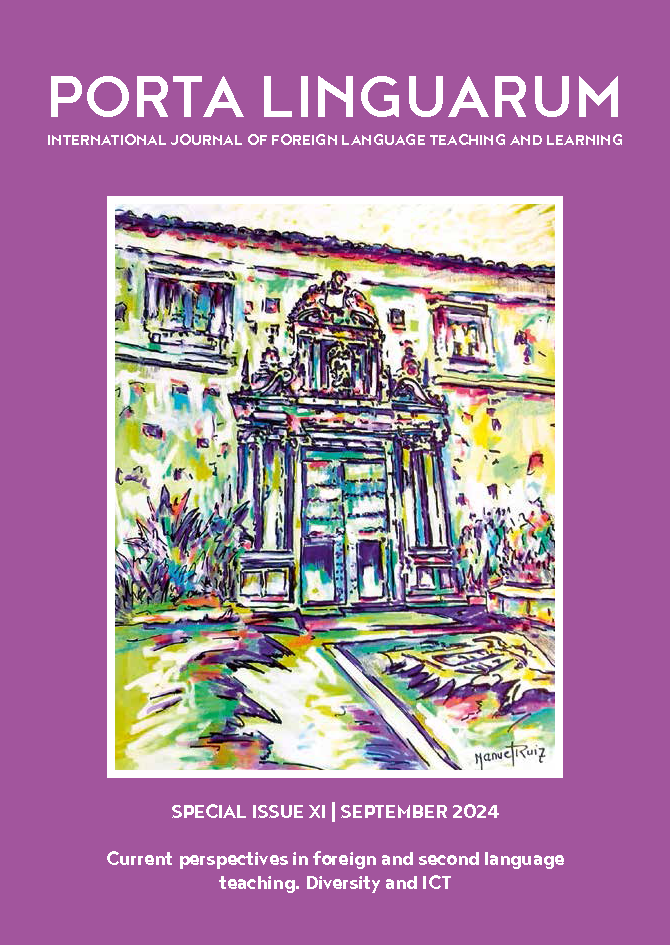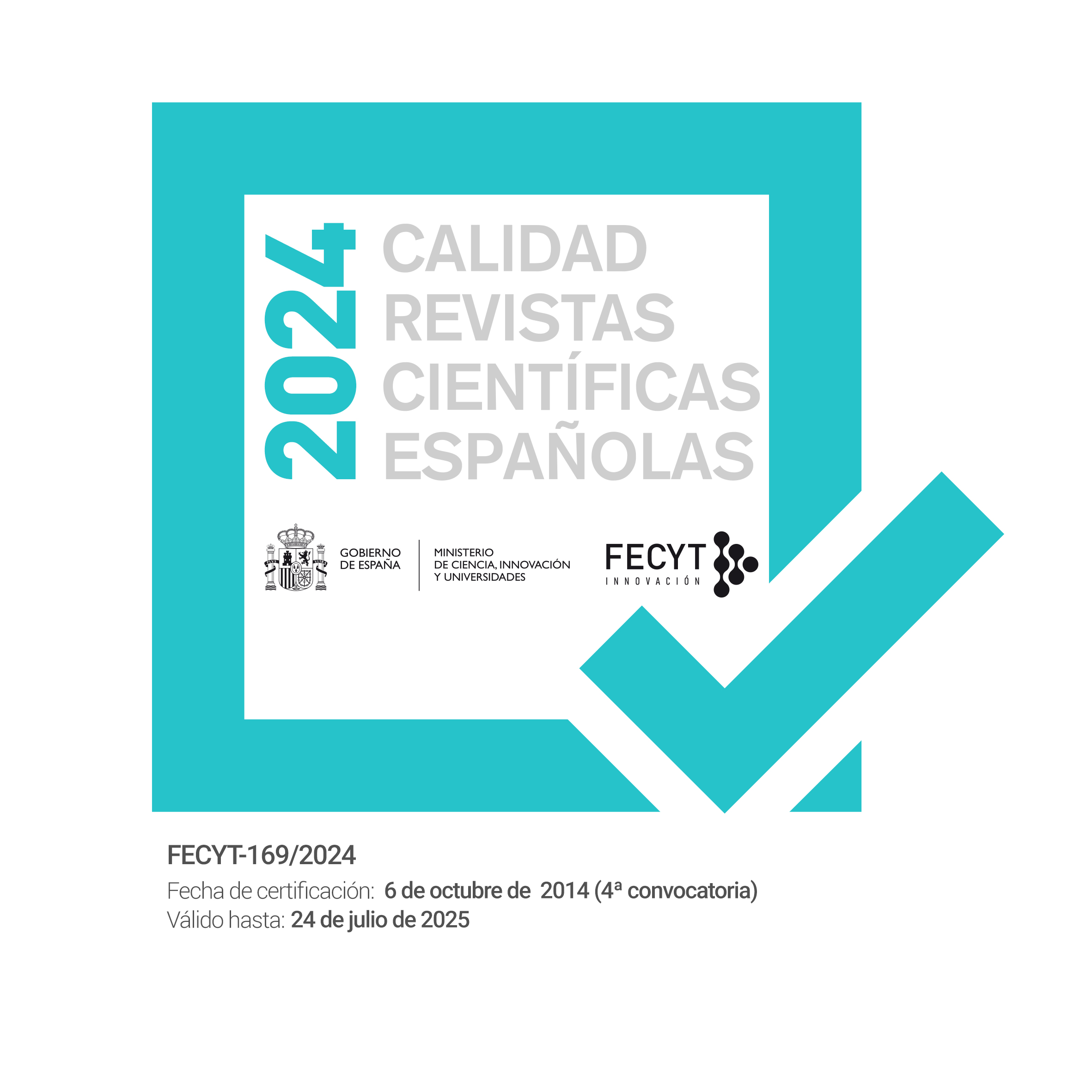A valuable perspective on apps for teaching L2 English to students with ASD
DOI:
https://doi.org/10.30827/portalin.viXI.30350Keywords:
Teaching and Learning of L2 English, Learners with ASD, Educational Apps, App Evaluation, App Classification.Abstract
Information and Communication Technologies (ICT) constitute an indispensable didactic resource; being called, in Pedagogy, Technologies for Learning and Communication (TLC). L2 didactics is not an exception, but a privileged area of its value. This is also the case for students with Special Educational Needs (SEN) or Barriers to Learning and Participation (BLP). Hence, their impact on Universal Design for Learning (UDL). For students with autism spectrum disorder (ASD), they become basic tools. This study, based on the evaluation of English apps for learners with ASD, contributes to increasing their potential. A sufficient number of specific apps for students with ASD were found, specifically 52. They were evaluated as recommendable, predominantly; then, they could improve their configuration to adapt to the needs of the group and achieve a rating of highly recommended. They were classified by areas of potential development, highlighting leisure, executive functions, and communication and language areas. Therefore, in addition to continuing to improve the aforementioned, it is necessary to continue creating other apps that work on instrumental skills, time management, emotions, relationships, space, money, etc. This will depend not only on their educational inclusion but also on their socio-labor inclusion.
Downloads
References
Ahmed, A. y Ibrahim, A.A. (2023). The effectiveness of adaptive learning methods in mathematics compared to flipped learning analyzed by ANN and IoT. Wireless Personal Communications. https://doi.org/10.1007/s11277-023-10500-6
Alcalá, G. y Ochoa, M.G. (2022). Trastorno del espectro autista (TEA). Revista de la Facultad de Medicina (México), 65(1), 7-20. https://doi.org/10.22201/fm.24484865e.2022.65.1.02
American Psychiatry Association [APA] (2022). Manual de diagnóstico y estadístico de los trastornos mentales (DSM-V-TR), 5ª edición. American Psychiatry Association.
Barletta, N.P. (2018). High-Functioning Autism and Second Language Development: A Case Study. Revista Interamericana de Psicología, 52(2), 183-193. https://doi.org/10.30849/rip/ijp.v52i2.345
Benedetto, S., Solano, L., y Serrano, V.M. (2019). La pedagogía en las TIC en el proceso enseñanza-aprendizaje del idioma inglés. En P. Vélez y Y. Yaguana. (Coords.), Nuevas tecnologías en el proceso de enseñanza-aprendizaje. (pp. 99-102). Universidad Técnica Particular de Loja. https://doi.org/10.5281/zenodo.2549700
Bradley, M. (2019). Case Study: Second Language Acquisition with Asperger Syndrome in a University Setting. Research in Pedagogy, 9(2), 166-180. https://dx.doi.org/10.17810/2015.99
Casas, J.P., y Aparicio, L.E. (2016). Un análisis del autismo desde la perspectiva de su influencia en familias y la tecnología como facilitador en el manejo de esta condición. Revista Logos Ciencia y Tecnología, 8(1), 168-182. https://doi.org/1022335/rlct.v8i1.301
Capel, M. (2021). Análisis y evaluación de aplicaciones para desarrollar la comunicación en el alumnado con trastorno del espectro autista. EDUTEC. Revista Electrónica de Tecnología Educativa, 75, 168-187. https://doi.org/10.21556/edutec.2021.75.1681
Consejo de Europa. (2018). Common European Framework of Reference for Languages: Learning, Teaching, Assessment. Companion Volume with New Descriptors. www.coe.int/lang-cefr
Costa, Y.P., Godde, A., Trémaud, M., Pontual, T., Aciszewski, T., Tardif, C. y Galy, E.M. (2022, 29 April - 5 May). A survey on accessibility guidelines for users with autism: a broad understanding of the relevance and completeness. [Conferencia]. CHI EA '22: Extended Abstracts of the 2022 CHI Conference on Human Factors in Computing Systems, Nueva Orleans, Estados Unidos. https://doi.org/10.1145/3554364.3559142
Dai, Y.G., Burke, J.D., Naigles, L., Eigsti, I.M. y Fein, D.A. (2019). Language Abilities in Monolingual- and Bilingual-Exposed Children with Autism or Other Developmental Disorders. Research in Autism Spectrum Disorders, 55, 38-49. https://doi.org/1016/j.rasd.2018.08.001
Digard, B.G., Sorace, A., Stanfield, A. y Fletcher-Watson, S. (2020). Bilingualism in autism: Language learning profiles and social experiences. Autism, 24(8), 2166-2177. https://doi.org/10.1177/1362361320937845
Fernández, C. (2017). La clase de lengua extranjera: una herramienta para desarrollar las habilidades de los alumnos TEA. Revista ventana abierta. http://revistaventanaabierta.es/
Gallardo-Montes, C.P., Caurcel, M.J. y Rodríguez, A. (2021b). Diseño de un sistema de indicadores para la evaluación y selección de aplicaciones para personas con Trastorno del Espectro Autista. Revista Electrónica Educare, 25(3), 1-24. https://doi.org/10.15359/ree.25-3.18
Gallardo-Montes, C.P., Caurcel, M.J. y Rodríguez, A. (2021c). Technologies in the education of children and teenagers with autism: evaluation and classification of apps by work areas. Education and Information Technologies, 27, 4087-4115. https://doi.org/10.1007/s10639-021-10773-z
Gallardo-Montes, C.P., Rodríguez, A. y Caurcel, M.J. (2021a). Apps for people with autism: Assessment, classification and ranking of the best. Technology in Society, 64, 101474. https://doi.org/10.1016/j.techsoc.2020.101474
García, S., Garrote, D. y Jiménez, S. (2016). Uso de las TIC en el Trastorno de Espectro Autista: aplicaciones. Revista de Educación Mediática y TIC, 5(2), 134-157. https://doi.org/10.21071/edmetic.v5i2.5780
Golshan, F., Moinzadeh, M., Narafshan, M.H. y Afarinesh, M.R. (2019). The Efficacy of Teaching English as a Foreign Language to Iranian Students with Autism Spectrum Disorder on Their Social Skills and Willingness to Communicate. Iranian Journal of Child Neurology, 13(3), 61-37. https://journals.sbmu.ac.ir/ijcn/article/view/16907
Hashim, H.U., Yunus, M.M. y Norman, H. (2022). Autism children and English vocabulary learning: a qualitative inquiry of the challenges they face in their English vocabulary learning journey. Children, 9(5), 628. https://doi.org/10.3390/children9050628
Hernández, M.E. y Sosa, M.E. (2018). Uso de Tecnologías de Información y Comunicación (TIC) en inclusión escolar de estudiantes con Trastornos del Espectro Autista (TEA). Contextos: Estudios de humanidades y ciencias sociales, 41, 1-10. http://revistas.umce.cl/index.php/contextos/article/view/1397
Johnson, R.W., White, B.K., Gucciardi, D.F., Gibson, N. y Williams, S.A. (2022). Intervention mapping of a gamified therapy prescription app for children with disabilities: user-centered design approach. JMIR Pediatrics Parenting, 5(3), e34588. https://doi.org/10.2196/34588
Ledbetter-Cho, K., O'Reilly, M., Lang, R., Watkings, L., y Lim, N. (2018). Meta-analysis of Table-Mediated Interventions for Teaching Academic Skills to Individuals with Autism. Journal of Autism and Developmental Disorders, 48, 3021-3036. https://doi.org/10.1007/s10803-018-3573-2
Lozano, J., Ballesta, F., Cerezo, M.C. y Alcaraz, S. (2014). Las Tecnologías de la Información y la Comunicación (TIC) en el proceso de enseñanza y aprendizaje de estudiantes con Trastorno del Espectro Autista (TEA). Revista Fuentes, 14, 193-208. https://revistacientificas.us.es/indez.php/fuentes/article/view/2359
Nuske, H.J., Buck, J.E., Ramesh, B., Becker-Haimes, E.M., Zentgraf, K. y Mandell, D.S. (2022). Making progress monitoring easier and more motivating: developing a client data collection app incorporating user-centered design and behavioral economics insights. Social Sciences, 11(3), 106. https://doi.org/10.3390/socsci11030106
Saladino, M., Marín, D. y San Martín, A. (2019). Aprendizaje mediado por tecnología en alumnado con TEA. Una revisión bibliográfica. Étic@ net, 19(1), 1–25. https://doi.org/10.30827/eticanet.v19i1.11858
Silva, G., y Rodríguez, F. de P. (2018). Una mirada hacia las TIC en la educación de las personas con discapacidad y con trastorno del espectro autista: análisis temático y bibliográfico. Revista de Educación Mediática y TIC, 7(1), 43-65. https://doi.org/10.21071/edmetic.v7i1.10030
Sweidan, S.Z., Salameh, H., Zakarneh, R. y Darabkh, K.A. (2019). Autistic innovative Assistant (AIA): An Android application for Arabic autism children. Interactive Learning Environments. https://doi.org/10.1080/10494820.2019.1681468
Taynar, M. y Marques, A.B. (2022, 29 abril - 5 mayo). Are user reviews useful for identifying accessibility issues that autistic users face?: an exploratory study [Conferencia]. CHI EA '22: Extended Abstracts of the 2022 CHI Conference on Human Factors in Computing Systems, Nueva Orleans, Estados Unidos. https://doi.org/10.1145/3554364.3559114
Varriale, L., Cuel, R., Ravarini, A., Briganti, P. y Minucci, G. (2023). Smart and inclusive museums for visitors with autism: the app case “A Dip in the Blue”. En S., Za, R., Winter y A., Lazazzara, (Eds.), Sustainable Digital Transformation. Lecture Notes in Information Systems and Organisation. Springer. https://doi.org/10.1007/978-3-031-15770-7_9
Weisblatt, E.J., Langensiepen, C.S., Cook, B., Dias, C., Plastied-Grant, K., Dhariwal, M., Fairclough, M.S., Friend, S.E., Malone, A.E., Varga-Elmiyeh, B., Rybicki, A., Karanth, P. y Belmonte, M.K. (2019). A tablet computer-assisted motor and language skills training program to promote communication development in children with autism: development and pilot study. International Journal of Human-Computer Interaction, 35(8), 643-665. https://doi.org/10.1080/10447318.2018.1550176
Wing, L. (1981). Asperger's Syndrome: A Clinical Account. Psychological Medicine. https://doi.org/10.1017/S0033291700053332
Yerys, B.E., Bertollo, J.R., Kenworthy, L., Dawson, G., Marco, E.J., Schultz, R.T. y Sikich, L. (2019). Brief report: pilot study of a novel interactive digital treatment to improve cognitive control in children with autism spectrum disorder and cooccurring ADHD symptoms. Journal of Autism and Developmental Disorders, 49, 1727-1737. https://doi.org/10.1007/s10803-018-3856-7



















